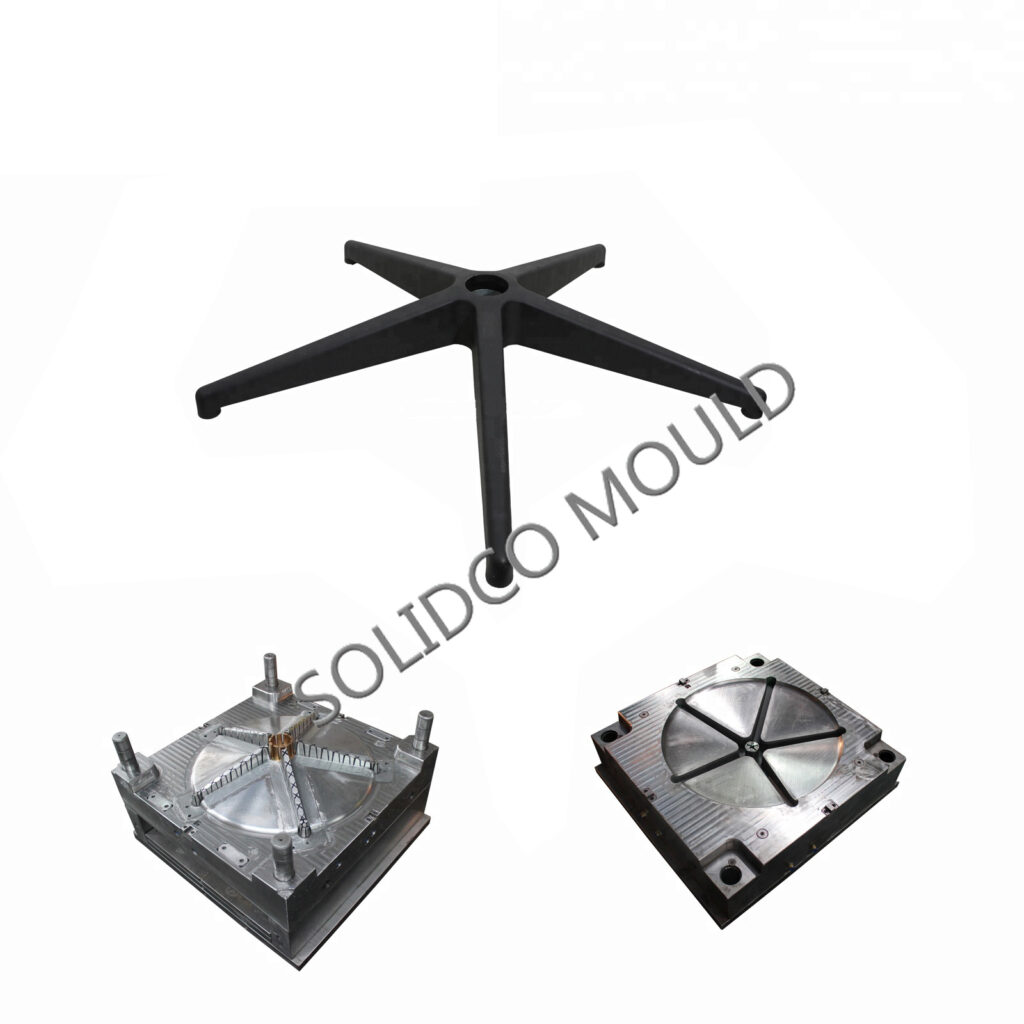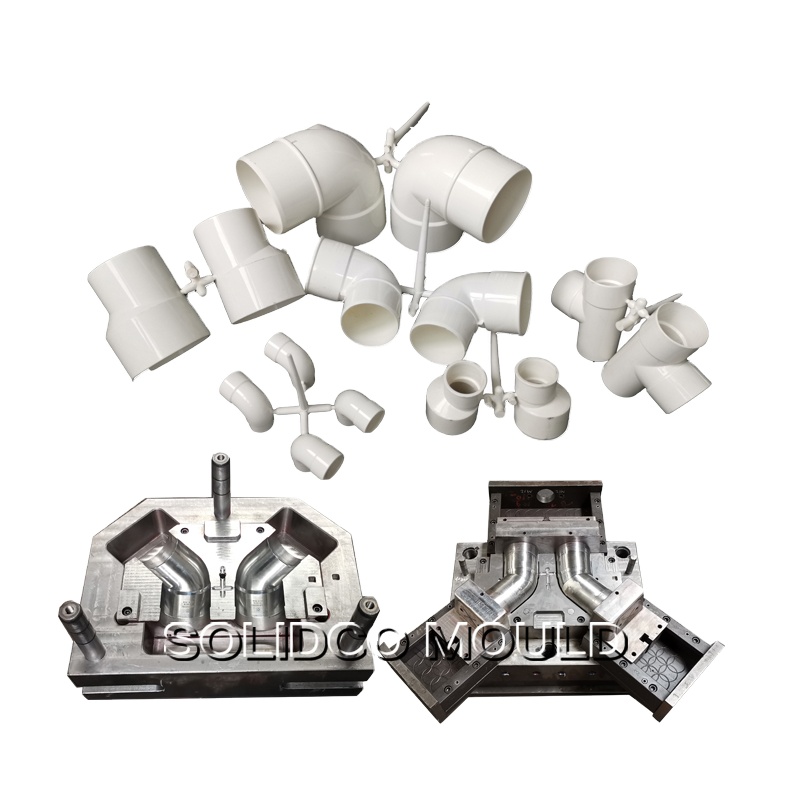
1. PC Material (Polycarbonate)
1. PC Material (Polycarbonate)
Features
①Amorphous plastic, no obvious melting point, glass transition temperature 140℃~150℃, melting temperature 215℃~225℃, molding temperature 250℃~320℃.
② It has high viscosity and is sensitive to temperature. It has good thermal stability within the normal processing temperature range. It basically does not decompose when staying at 300℃ for a long time. It starts to decompose when it exceeds 340℃. The viscosity is less affected by the shear rate.
③ Strong water absorption.

Screw Parameter Selection
a. L/D has the characteristics of good thermal stability and high viscosity. In order to improve the plasticizing effect, a large aspect ratio should be selected as much as possible.
Because of its wide melting temperature range, a progressive screw is used. L1=30% of the total length, L2=46% of the total length.
b. The compression ratio ε needs to be adapted to the melting rate from the gradient A, but the melting rate cannot be calculated at present. According to the processing characteristics of PC from melting from 225℃ to 320℃, the gradient A value can be relatively medium. The upper value, when L2 is larger, the ordinary gradual screw ε=2~3.
c. Because of its high viscosity and strong water absorption, a mixing structure is added to the screw before the homogenization section and after the compression section to enhance the disintegration of the solid bed and at the same time, allow the entrained moisture to turn into gas and escape.
d. Other parameters such as e,s,φ and the gap with the barrel can be the same as other ordinary screws.
2. PMMA Material (Plexiglass)
Features
①The glass transition temperature is 105℃, the melting temperature is greater than 160℃, the decomposition temperature is 270℃, and the molding temperature range is very wide.
②High viscosity, poor fluidity, and good thermal stability.
③ Strong water absorption.

Screw Parameter Selection
a. L/D selects a gradual screw with an aspect ratio of 20 to 22. Depending on the accuracy requirements of the product molding, generally L1=40% and L2=40%.
b. Compression ratio ε is generally selected from 2.3 to 2.6.
c. In view of its certain hydrophilicity, a mixing ring structure is adopted at the front end of the screw.
d. Other parameters can generally be designed according to the general screw, and the gap with the barrel should not be too small.
3. PA Material (Nylon)
Features
① There are many types of crystalline plastics, different types have different melting points, and the melting point range is narrow. The melting point of commonly used PA66 is 260℃ ~ 265℃.
② Low viscosity, good fluidity, relatively obvious melting point, and poor thermal stability.
③The water absorption is average.

Screw Parameter Selection
a. L/D selects a mutant screw with an aspect ratio of 18 to 20.
b. The compression ratio is generally selected from 3 to 3.5, among which h3 = 0.07 to 0.08D to prevent overheating decomposition.
c. Because of its low viscosity, the gap between the non-return ring and the barrel should be as small as possible, about 0.05, and the gap between the screw and the barrel is about 0.08. If necessary, depending on the material, the front end can be equipped with a non-return ring and a nozzle. The place should be self-locking.
d. Other parameters can be designed according to the general screw.
4. PET Material (Polyethylene Terephthalate)
Features
①The melting point is 250℃~260℃. The molding temperature of blow molding grade PET is wider, about 255℃~290℃.
②Blow molding grade PET has a high viscosity, temperature has a great impact on the viscosity, and has poor thermal stability.
Screw Parameter Selection
a. L/D is generally taken as 20, three-section distribution L1=50%-55%, L2=20%.
b. Use a screw with low shear and low compression ratio. The compression ratio ε is generally 1.8 to 2. At the same time, shearing and overheating will cause discoloration or opacity h3=0.09D.
c. There is no mixing ring at the front end of the screw to prevent overheating and material accumulation.

5. PVC Material (Polyvinyl Chloride)
Features
① No obvious melting point, it becomes soft at 60℃, becomes viscoelastic at 100℃~150℃, melts at 140℃ and decomposes at the same time, decomposes rapidly at 170℃, the softening point is close to the decomposition point, and it decomposes and releases HCl gas.
②Poor thermal stability, temperature and time will cause decomposition, and poor fluidity.
Screw Parameter Selection
a. The temperature control is strict, and the screw design should be as low as possible to prevent overheating.
b. The screw and barrel must be corrosion-proof.
c. The injection molding process needs to be strictly controlled.
d. Generally speaking, the screw parameters are L/D=16~20, h3=0.07D, ε =1.6~2, L1=40%, L2=40%.
e. In order to prevent material accumulation, there is no non-return ring, and the head taper is 20°~30°, which is more suitable for soft rubber. If the product requirements are higher, a separated screw without metering section can be used.
This kind of screw is suitable for hard PVC. It is more suitable, and in order to cooperate with temperature control, cooling water or oil holes are added inside the screw in the feeding section, and cold water or oil tank is added outside the barrel. The temperature control accuracy is about ±2℃.

Contact Person: Alex Chu
WhatsApp/ WeChat: 0086 18968677763
Email: sc10@solidcomould.com
Website: www.solidcomould.com